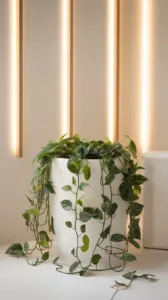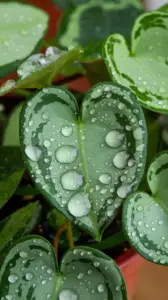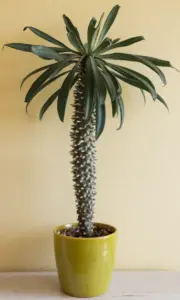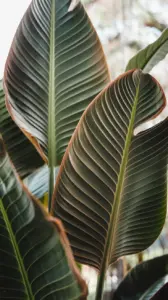Biological Features of Hoya Kerrii
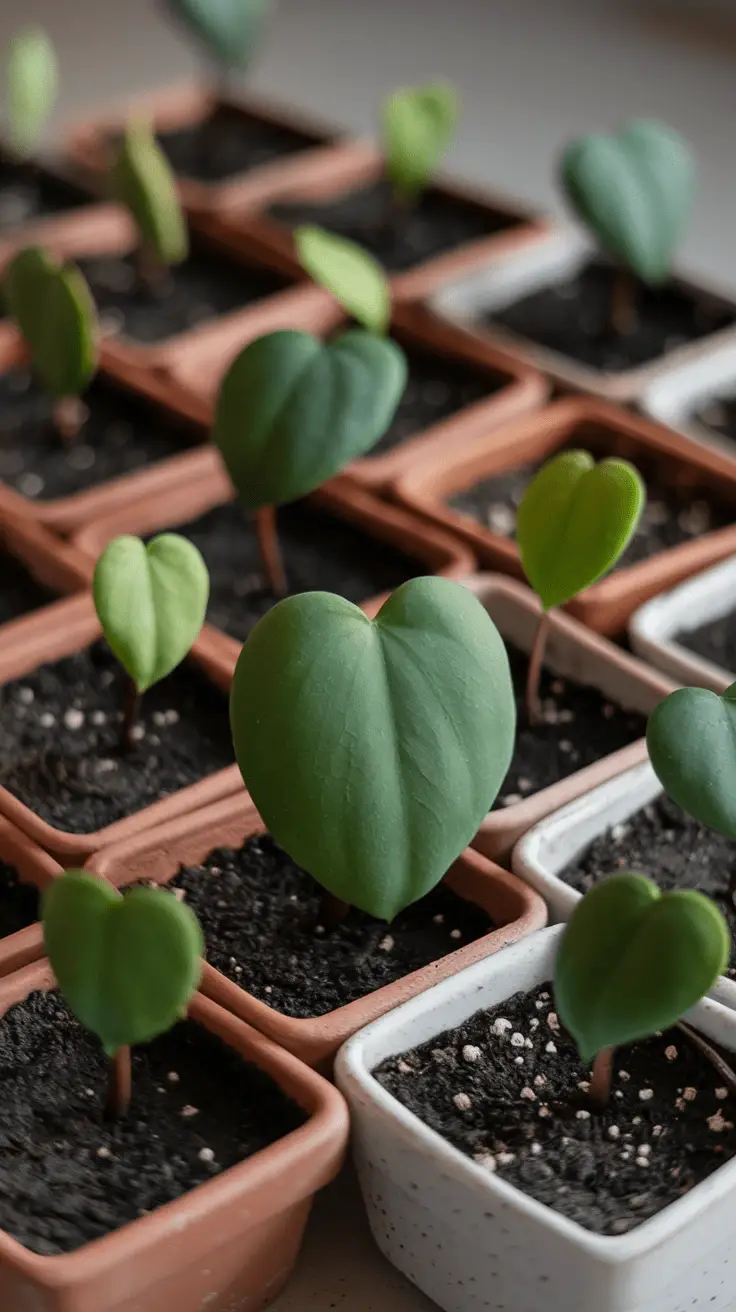
Hoya Kerrii, commonly known as the Sweetheart Plant, exhibits unique biological features that delight enthusiasts. This succulent has thick, heart-shaped leaves that can grow up to 15 cm long. Moreover, its waxy texture gives an impression of durability. Hoya Kerrii belongs to the Apocynaceae family, where it showcases a climbing or trailing habit.
Leaves and Stems
The leaves are dark green, turning slightly lighter when exposed to direct sunlight. Stems are sturdy and can extend several feet, making them suitable for hanging baskets. In addition, they require minimal care, thriving mainly in well-draining soil.
Flowers and Growth
This plant produces clusters of star-shaped flowers that emit a sweet fragrance. Generally, flowering occurs in the warm months when the plant receives enough sunlight and humidity. The flowers can range in color from white to pale yellow with a deep maroon center. These features make Hoya Kerrii both an aesthetic and aromatic addition to any collection.
| Feature | Description |
|---|---|
| Leaf Shape | Heart-shaped, thick, and waxy |
| Flower Color | White, pale yellow, or maroon center |
| Growth Habit | Climbing or trailing |
| Family | Apocynaceae |
In conclusion, understanding the biological features of Hoya Kerrii enhances appreciation for this charming plant. The distinct leaves and beautiful flowers contribute to its popularity among collectors.
History and Cultural Significance
The Hoya Kerrii, often called the Sweetheart Plant, has a rich cultural background. This succulent is native to Southeast Asia, particularly Thailand and the Philippines. Its heart-shaped leaves symbolize love and affection, making it popular in various cultures. People often give Hoya Kerrii as a gift on special occasions. The plant’s easy care and attractive appearance also contribute to its popularity.
Symbolism and Tradition
In many cultures, the Hoya Kerrii signifies love and good luck. Additionally, this plant is seen as a symbol of enduring relationships. Here’s what you should know about its significance:
- Gifting it on Valentine’s Day is a common practice.
- Many cultures believe it brings harmony to homes.
- Some consider it a plant for new beginnings.
- Hoya Kerrii represents loyalty between partners.
People often keep this plant in their homes for its decorative appeal and positive symbolism. Moreover, it has become a popular choice among houseplant enthusiasts worldwide. Its unique, heart-shaped leaves consistently draw attention, especially around romantic occasions. As a result, the Hoya Kerrii remains a beloved plant in various households.

Ideal Growing Conditions for Hoya Kerrii
Hoya Kerrii, often known as the Sweetheart plant, thrives in specific conditions to flourish. Understanding these requirements can help you cultivate a vibrant plant. First, it’s essential to recreate their native environment, which consists of warm temperatures and bright indirect light.
Hoya Kerrii prefers a temperature range between 60°F to 80°F (15°C to 27°C). They can tolerate higher temperatures, but below 50°F (10°C) can be detrimental. Ensure you avoid drafts, as sudden changes can stress the plant.
Light Requirements
For optimal growth, provide Hoya Kerrii with bright, indirect light. Avoid direct sunlight, as it can scorch the leaves. If you’re indoors, a south or east-facing window works well. If the light is insufficient, the plant may become leggy and produce fewer flowers.
Watering Needs
Watering is critical for Hoya Kerrii. Allow the top inch of the soil to dry out before watering again. Over-watering can lead to root rot, a common issue with this plant. During the winter, reduce watering frequency, as the plant enters dormancy.
Soil and Fertilization
Use a well-draining potting mix to support healthy root growth. A mix containing perlite or orchid bark is ideal. Fertilize every 4-6 weeks during the growing season, using a balanced liquid fertilizer diluted to half strength. This practice promotes lush foliage and abundant blooms.
Humidity Levels
Hoya Kerrii enjoys humidity levels between 40% to 70%. To increase humidity, consider misting your plant or placing a humidity tray nearby. However, ensure there’s good air circulation to prevent mold and mildew.
Table of Ideal Conditions
| Condition | Optimal Range |
|---|---|
| Temperature | 60°F to 80°F (15°C to 27°C) |
| Light | Bright, indirect |
| Watering | Top inch dry |
| Soil | Well-draining mix |
| Humidity | 40% to 70% |
In conclusion, ensuring these ideal growing conditions for Hoya Kerrii will lead to a thriving and beautiful plant. Regular monitoring and adjustment are key ingredients for success.
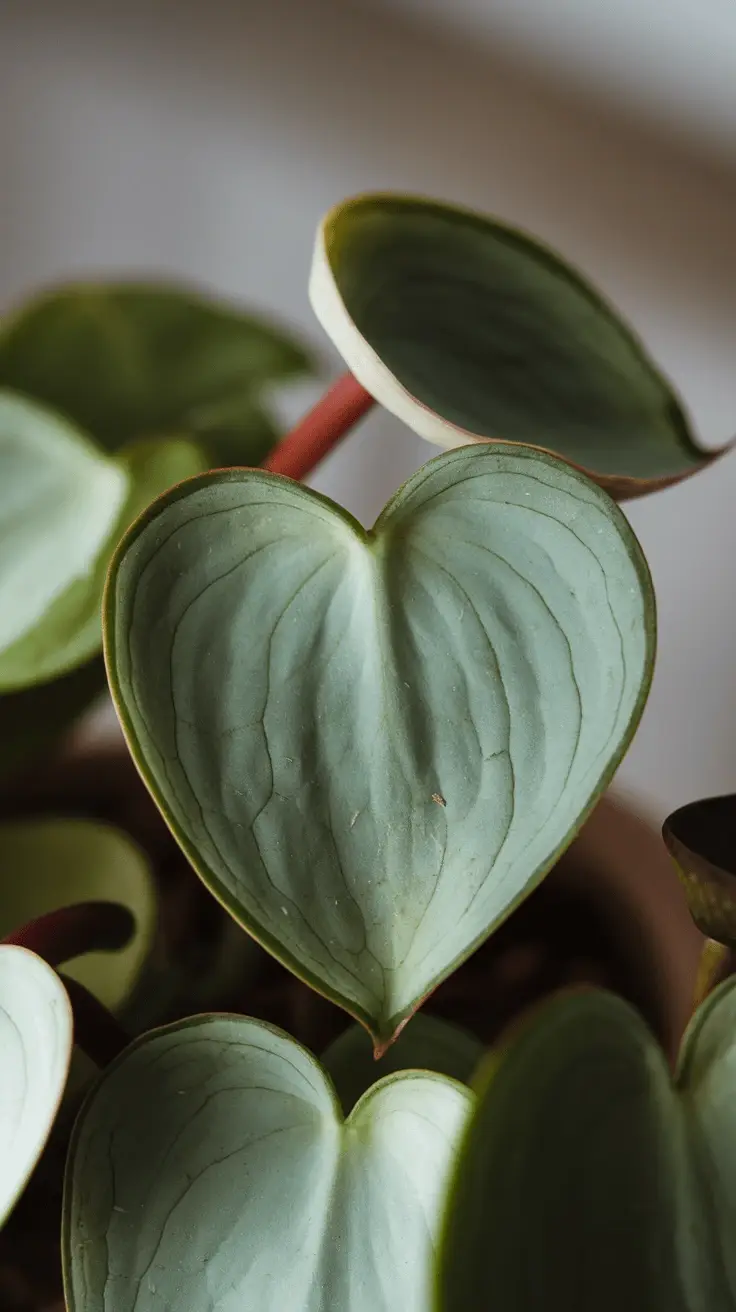
Plant Care and Maintenance
Hoya Kerrii, often referred to as the Sweetheart Plant, is known for its heart-shaped leaves. Taking care of this succulent requires attention to light, watering, humidity, and soil conditions. Here are some essential tips to maintain your Hoya Kerrii:
- Light Requirements: Hoya Kerrii thrives in bright, indirect sunlight. Too much direct sunlight can scorch the leaves.
- Watering: Water your Hoya Kerrii when the top inch of the soil feels dry. It prefers to dry out a bit between waterings.
- Humidity: This plant enjoys higher humidity but can adapt to average room conditions. Misting occasionally can help increase moisture levels.
- Temperature: Ideally, keep Hoya Kerrii in a range between 60°F to 80°F. Avoid exposing it to cold drafts.
- Soil: A well-draining potting mix is best for Hoya Kerrii. Consider using a cactus mix or adding perlite to regular potting soil.
- Fertilizing: During the growing season, feed your Hoya Kerrii with a balanced fertilizer every month. In winter, reduce feeding to once every two months.
- Pruning: You can prune your Hoya Kerrii to encourage bushier growth. Trim leggy stems to maintain its shape.
- Repotting: Repot the plant every couple of years or when it becomes root-bound. Choose a slightly larger pot to allow for growth.
- Pests: Keep an eye out for pests like mealybugs and aphids. Use insecticidal soap if you notice any infestations.
By following these care tips, your Hoya Kerrii will thrive, showcasing its unique heart-shaped foliage. Regular monitoring will help you catch any issues early. This ensures a healthy and beautiful plant as part of your indoor garden.
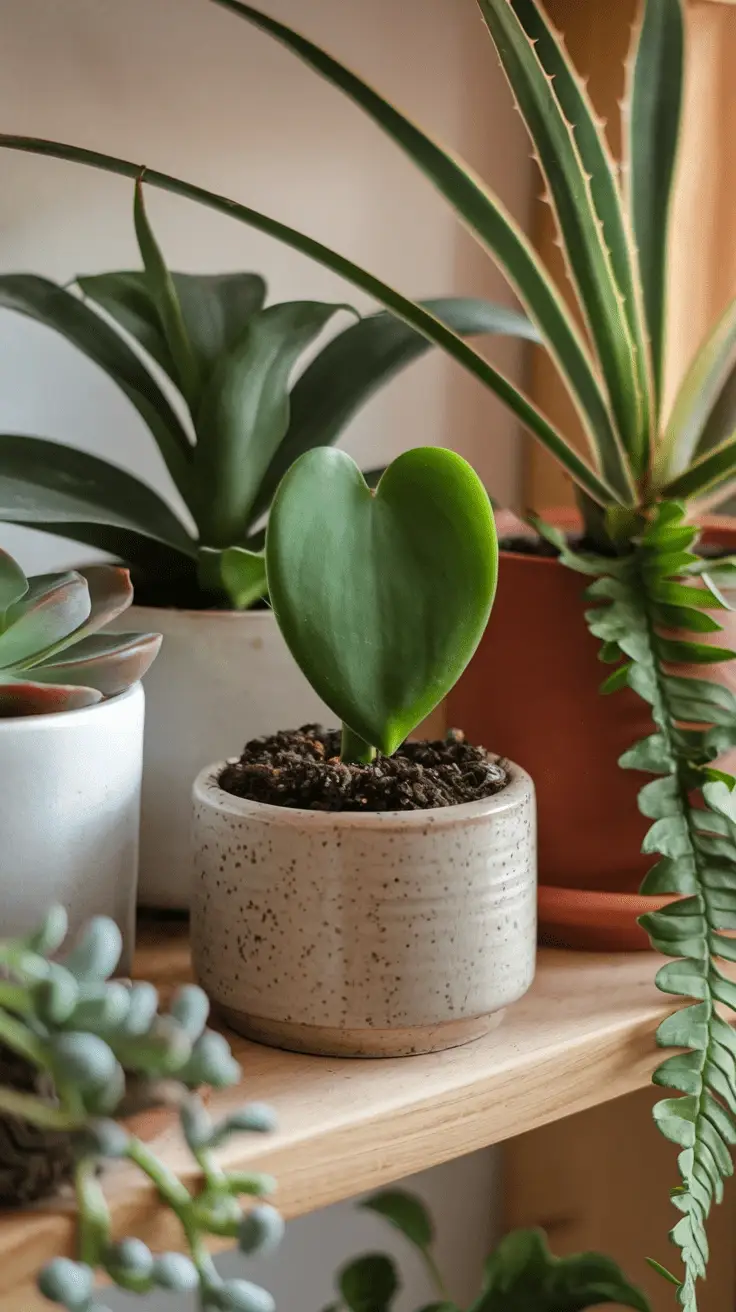
Propagation Techniques for Hoya Kerrii
Propagation of Hoya Kerrii, also known as the Sweetheart plant, is straightforward and rewarding. By following the right techniques, you can easily create new plants from existing ones. This plant can be propagated through stem cuttings, which is the most common method.
Stem Cutting Method
First, choose a healthy stem with at least two to three leaves. Using sterilized scissors, cut a segment about four to six inches long. Ensure your cutting includes a node, as this is crucial for root development. After cutting, allow the wound to callous for a few hours. This step helps prevent rot when placed in soil.
Next, you can place the cutting directly into a pot with well-draining soil or use water to encourage root growth. If you choose soil, make sure to keep it moist but not soggy. Alternatively, if propagating in water, ensure the node is submerged while leaves are above the waterline. Change the water every few days to keep it fresh. Roots will start to develop in a few weeks, indicating readiness for transplant.
Care After Propagation
After your Hoya Kerrii cuttings have rooted, they can be potted in a larger container. While it’s essential to provide bright, indirect light, avoid direct sun exposure. Additionally, water your new plants thoroughly, but allow the topsoil to dry out between watering sessions. The plant thrives in humidity, so consider misting the leaves regularly to boost their environment.
Overall, propagating Hoya Kerrii is a fulfilling hobby. With patience and the right care, your propagation efforts will yield beautiful new plants to enjoy or share with friends. Remember, monitoring their growth will lead to successful long-term development.
Common Problems and Solutions
Hoya Kerrii, often known for its charming heart-shaped leaves, can encounter several common issues. Understanding these problems helps in providing the best care. Properly identifying symptoms is crucial for maintaining your plant’s health.
Overwatering Issues
Many plant owners struggle with overwatering, which leads to root rot. Signs of root rot include yellowing leaves and a mushy base. To address this issue, follow these steps:
- Check the soil moisture regularly.
- Allow the soil to dry before the next watering.
- Use well-draining soil for better aeration.
Underwatering Concerns
On the other hand, underwatering can also pose a significant problem. Hoya Kerrii will exhibit signs of stress such as wilting or drooping leaves. To remedy underwatering:
- Ensure a consistent watering schedule.
- Monitor the plant’s environment for humidity levels.
- Consider using a moisture meter to determine soil needs.
Pest Infestations
Pests can threaten the vitality of your Hoya Kerrii. Common pests include spider mites and mealybugs. Management involves regular inspections and treatments:
- Inspect leaves for webs or white cottony masses.
- Isolate affected plants to prevent spread.
- Use insecticidal soap or neem oil for treatment.
Environmental Stress
This plant prefers consistent environments. Rapid temperature changes can cause leaf droppage. Here are ways to minimize stress:
- Keep plant away from drafts or heating vents.
- Maintain a stable temperature between 60°F to 80°F.
- Avoid sudden changes in lighting conditions.
Table of Common Problems and Solutions
| Problem | Symptoms | Solutions |
|---|---|---|
| Overwatering | Yellow leaves, mushy base | Let soil dry, use well-draining soil |
| Underwatering | Wilting leaves, drooping | Consistent watering schedule |
| Pest Infestation | Webs, cottony masses | Isolate, treat with insecticidal soap |
| Environmental Stress | Leaf droppage | Stable temperature, avoid drafts |

By understanding these problems and implementing solutions, you can enjoy a thriving Hoya Kerrii.
Seasonal Care Adjustments
Hoya Kerrii, commonly known as the sweetheart plant, requires specific care adjustments throughout the seasons. During spring and summer, this plant thrives best with increased light and warmth. Ensure it receives bright, indirect sunlight, as too much direct sun can scorch its leaves. Water more frequently during these warmer months, but allow the soil to dry out slightly between waterings.
As fall approaches, gradually reduce watering. Monitor the humidity levels; Hoya Kerrii prefers moderate humidity, especially in winter.
- In spring, increase fertilization every 2-4 weeks to promote growth.
- During summer, maintain a consistent watering schedule.
- In autumn, start to water less, allowing the soil to dry more between drinks.
- In winter, avoid fertilizing and limit watering to prevent root rot.
Following these seasonal adjustments will help your Hoya Kerrii flourish year-round. Proper care ensures a healthy plant with beautiful heart-shaped leaves.
Microclimate Setup Tips
Creating the ideal microclimate for your Hoya Kerrii is essential for its growth and health. This plant thrives in specific conditions, so attention to detail is crucial. Here are some tips to get started:
- Lighting: Place your plant bright, indirect sunlight. Avoid direct rays, as they can scorch the leaves.
- Temperature: Ideally, maintain temperatures between 60°F and 80°F. This range promotes optimal growth and blooming.
- Humidity: High humidity levels are beneficial. Aim for 50-60% humidity, especially in dry environments.
- Air Circulation: Ensure good air circulation around your plant. Stagnant air can lead to mold and pest problems.
- Watering: Water your plant when the top inch of soil is dry. Overwatering can cause root rot.
- Soil: Use well-draining potting mix. A combination of peat, perlite, and orchid bark works well.
In addition, you can consider using humidity trays to increase moisture levels in the air around your plant. Grouping your Hoya Kerrii with other plants also helps increase local humidity. Regularly wipe the leaves to prevent dust buildup, allowing for efficient photosynthesis.
Frequently Asked Questions
What is the best way to care for Hoya Kerrii?
The plant requires bright, indirect light. This plant thrives in a humid environment. Regular watering is essential, but avoid overwatering. Ensure the soil dries out between waterings for optimal health.
How often should I water Hoya Kerrii?
Water your Hoya Kerrii every 1-2 weeks. Adjust the frequency based on your environment. In lower humidity, increase the watering intervals to prevent thirst. During winter, reduce watering to avoid root rot.
Is Hoya Kerrii toxic to pets?
Hoya Kerrii is generally considered non-toxic to pets. However, it’s always wise to keep plants out of reach. Monitor your pets’ behavior around plants to ensure their safety.
Can Hoya Kerrii be propagated easily?
Yes, this plant can be propagated from cuttings. Choose a healthy stem and cut below the node. Place it in water or soil and ensure proper light conditions for growth.
What pests should I watch out for?
Common pests include mealybugs and spider mites. Inspect the foliage regularly and regularly clean the leaves. Use insecticidal soap if necessary to treat infestations.
Summary and Recommendations
Hoya Kerrii, commonly known as the sweetheart plant, is a unique and popular houseplant. It features heart-shaped leaves that make it a favorite choice for gifting, especially on Valentine’s Day. To thrive, this plant prefers bright, indirect sunlight and well-draining soil. Water it when the soil feels dry, but avoid overwatering to prevent root rot. Generally, Hoya Kerrii is low-maintenance and can adapt to various indoor conditions.
Furthermore, this plant benefits from occasional fertilization during the growing season. A balanced fertilizer will promote healthy growth and vibrant foliage. If you want to propagate, consider stem cuttings. They root easily and can create new plants for your collection.
In summary, Hoya Kerrii is a charming choice for plant lovers. Its heart-shaped leaves add a touch of love to any space. With proper care and attention, this plant can thrive for many years. Consider adding it to your indoor garden for a delightful and meaningful addition.

